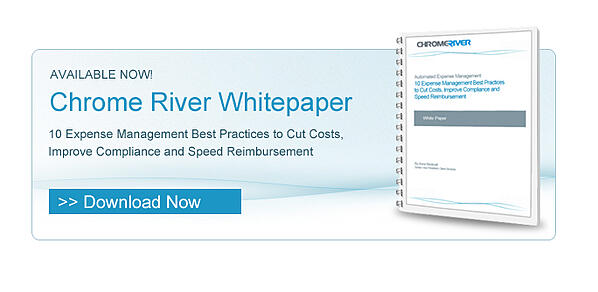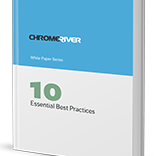 Recently I had the good fortune to stumble across an excellent article entitled "9 Best Practices for Automating Your AP Department" in the third-quarter printing of Financial Operations Matters. This little gem was written by David Schmidt and Katie McMurry and offers a viewpoint on AP Automation that is very much aligned with my own personal opinions on this topic.
Recently I had the good fortune to stumble across an excellent article entitled "9 Best Practices for Automating Your AP Department" in the third-quarter printing of Financial Operations Matters. This little gem was written by David Schmidt and Katie McMurry and offers a viewpoint on AP Automation that is very much aligned with my own personal opinions on this topic.
Katie and David start off by introducing paper as the obvious enemy of AP departments everywhere, a problem that is compounded by the fact that most invoices are not sent directly to AP. Meaning, invoices are often sent to different departments (like purchasing) or various individuals (like a requestor) and even to varying locations (like a branch office). The result is a lack of visibility, loss of early pay discounts, possible late payments, and increased potential for duplicates.
The authors then provide a very well laid-out game plan that is both common sense and actionable:
Step 1: Centralize Invoice Receipt
If you don't already have a formal policy that outlines how all invoices should be sent directly to AP, now is the time to create one. Suppliers should be advised of this policy regardless of how the order is placed. Centralization of invoice receipt greatly reduces the time from invoice receipt to entry and paves the way for further process improvement (hint: invoice imaging). When they come directly to the AP department, your invoices won't end up on someone's desk for days or get lost in their to-do pile. Remember, while prompt processing and payment of invoices is a primary goal of AP, most other employees don't understand how they themselves impact the length of the invoice-processing cycle.
Step 2: Leverage Front-End Imaging
Front-end imaging ensures that invoices are visible by all interested parties in the shortest possible amount of time, without the delay and expense of transporting physical documents. When combined with data capture solutions, both the invoice image and important data can be imported into your invoice automation software or AP system. This is exactly why we created Chrome River CAPTURE. Suppliers mail, fax or email their invoices to a central processing center, where the invoice images and important data are captured for import into Chrome River INVOICE. This eliminates the mail room, mail delivery and AP data-entry processes, yielding savings of both time and money.
Step 3: Validate Invoices Immediately
Typically, a substantial number of invoices that come into AP will have missing or inaccurate information, which can take days or weeks to resolve before those invoices can be approved for payment. By using an AP invoice automation solution (particularly one that has front-end imaging and data capture enabled), invoices can be systematically validated upon receipt through the use of invoice compliance rules. Those invoices that require manual intervention can be placed into a work queue for resolution. The prompt identification of problem invoices and escalation of them to a resolution specialist can take days or even weeks out of your invoice-to-pay cycle time.
Next week we will discuss Best Practice Steps 4, 5 and 6. Stay tuned for more actionable AP automation!
Subscribe
Latest Posts
Posts by Category
I just love the Chrome River application. I could probably sell it! Finance Administrative Coordinator Law Firm, 800 Employees
Can’t we just move year-end, so that we can roll out Chrome River sooner!? Financial Systems Director Law Firm, 300 Employees


Comments